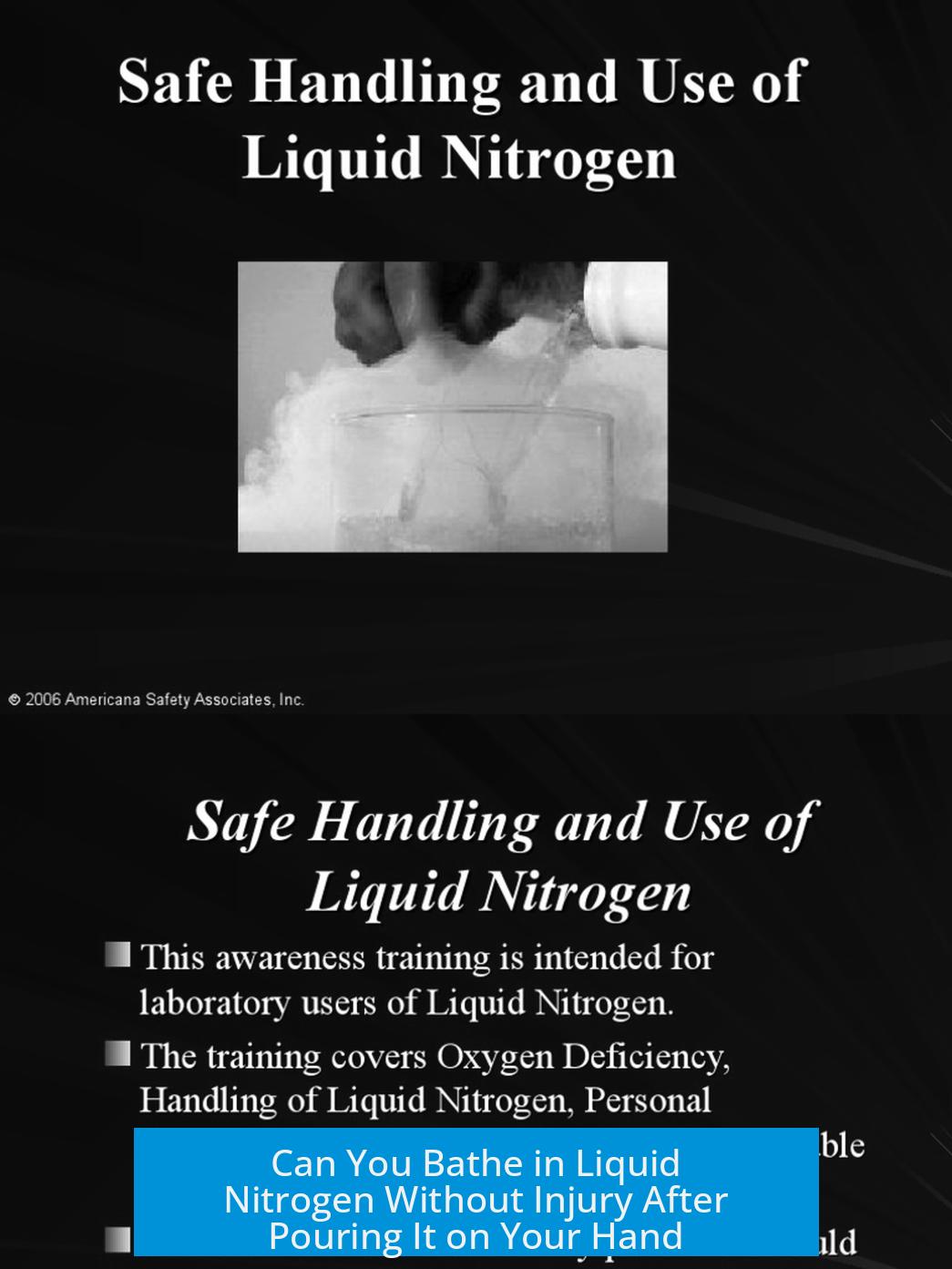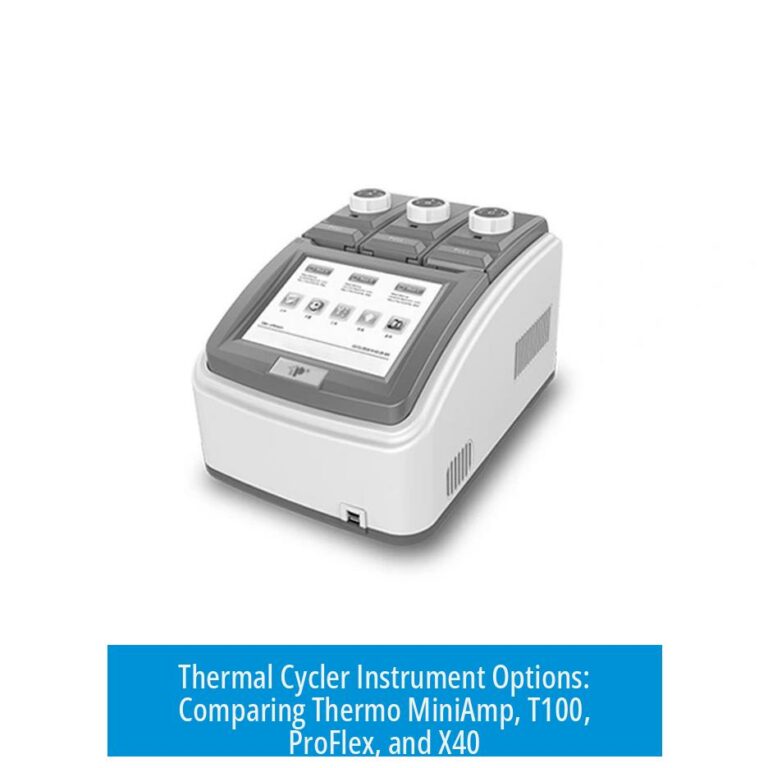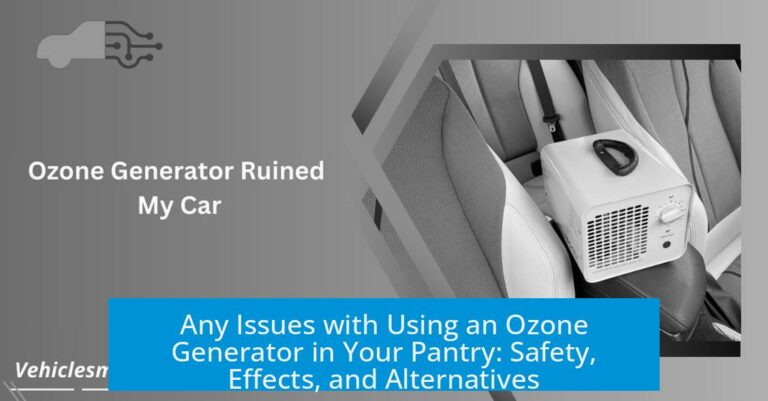Can You Safely Take a Bath in Liquid Nitrogen if Pouring It on Your Hand Does Not Hurt?
The short answer is no. Although brief contact with liquid nitrogen on the skin may not immediately cause pain due to a protective layer of nitrogen gas, immersing your body in liquid nitrogen is extremely dangerous and will cause severe injury or death.
Understanding Why Brief Contact May Not Hurt
The Leidenfrost Effect
When liquid nitrogen touches skin, it rapidly evaporates because the skin’s temperature is far higher than nitrogen’s boiling point of −196°C. This rapid vaporization creates a thin gas layer between the liquid and skin. This phenomenon, called the Leidenfrost effect, acts as an insulating cushion.
This gas layer prevents immediate contact between liquid nitrogen and the skin, making quick pours or splashes feel cold but not painfully freezing. The nitrogen vapor essentially cushions the skin.
Limitations of the Leidenfrost Effect
This protection lasts only briefly and under very specific circumstances. The gas layer requires your skin’s heat to sustain evaporation. If the liquid nitrogen stays in contact for longer, it rapidly cools the skin below nitrogen’s boiling point.
Once the skin’s surface temperature drops sufficiently, evaporation slows. The protective gas cushion breaks down. Direct contact with liquid nitrogen then freezes skin cells and tissues instantly.
Myth Versus Reality
The claim that pouring liquid nitrogen on your hand is painless is misleading. In most cases, such contact will cause a freezing injury, though users may not feel pain immediately due to nerve desensitization at low temperatures.
Consequences of Bathing in Liquid Nitrogen
Immediate and Severe Frostbite
Immersion in a liquid nitrogen bath removes heat from the body far faster than brief splashes. The insulating gas layer cannot form on a large scale to protect the entire skin surface. The liquid directly freezes tissue within seconds.
The result is instantaneous frostbite and tissue death. Deep freezing destroys skin layers, blood vessels, and underlying tissues. Exposure lasting even a few seconds can cause irreversible damage.
Internal Injuries from Nitrogen Contact
Body parts submerged in liquid nitrogen can absorb cold rapidly. Moist mucous membranes in the mouth, eyes, or genital areas suffer accelerated freezing. If liquid nitrogen enters the body through an open wound or inhalation, it causes severe internal injury.
For example, inhaling nitrogen vapor displaces oxygen in the lungs, leading to asphyxiation. Internal freezing injuries can affect the respiratory tract, digestive system, or other organs.
Risk of Oxygen Displacement and Suffocation
Nitrogen gas is inert and makes up about 78% of air naturally. However, evaporated nitrogen from a liquid bath rapidly expands and displaces oxygen in enclosed spaces.
In a bathroom or confined room, nitrogen vapor can lower oxygen concentration drastically, making breathing difficult or impossible within minutes. This creates a serious suffocation hazard.
Additional Risks Related to Liquid Nitrogen Contact
Internal Expansion from Ingesting Liquid Nitrogen
Ingesting liquid nitrogen is hazardous. As a cryogenic liquid, it boils and expands about 700 times its volume when it vaporizes.
Any swallowed liquid rapidly turns to gas inside the stomach or esophagus, causing expansion pressures. This can rupture internal tissues and organs, which is often fatal or requires emergency surgery.
Limited Duration of Protection from Cold
The body produces heat continuously but only up to a point. When exposed to extreme cold such as liquid nitrogen, the rate of heat loss outpaces heat generation.
The initial gas barrier ceases once the skin’s temperature drops low enough. Below that threshold, freezing damage sets in immediately and progressively worsens.
Summary Table of Risks
| Scenario | Effect | Risk Level |
|---|---|---|
| Brief skin splash | Leidenfrost effect cushions skin; possible mild cold sensation | Moderate, temporary protection |
| Extended skin exposure | Protection breaks; rapid freezing and frostbite | High; tissue death |
| Immersion (bath) | Direct contact causes instant severe frostbite; risk of death | Extreme; life threatening |
| Inhalation of nitrogen vapor | Oxygen displacement, suffocation | Critical; potential fatality |
| Ingestion of liquid nitrogen | Internal expansion, tissue rupture | Severe; emergency risk |
Concluding Points
- Brief contact with liquid nitrogen is buffered by a gas layer formed by rapid evaporation known as the Leidenfrost effect.
- This gas layer fails during longer exposures, exposing skin directly to ultracold liquid nitrogen, leading to instant frostbite and serious injury.
- Bathing in liquid nitrogen causes life-threatening tissue damage and significant risk of suffocation due to oxygen displacement.
- Ingesting liquid nitrogen causes dangerous internal volume expansion and tissue rupture.
- Any assumption that because a quick splash does not hurt means bathing or ingesting nitrogen is safe is false and highly hazardous.
Understanding the chemistry and physics behind liquid nitrogen is critical. The extreme cold, combined with its rapid vaporization, can cause fatal injuries within seconds. The Leidenfrost effect offers only a momentary shield, insufficient for immersion or ingestion.





Leave a Comment